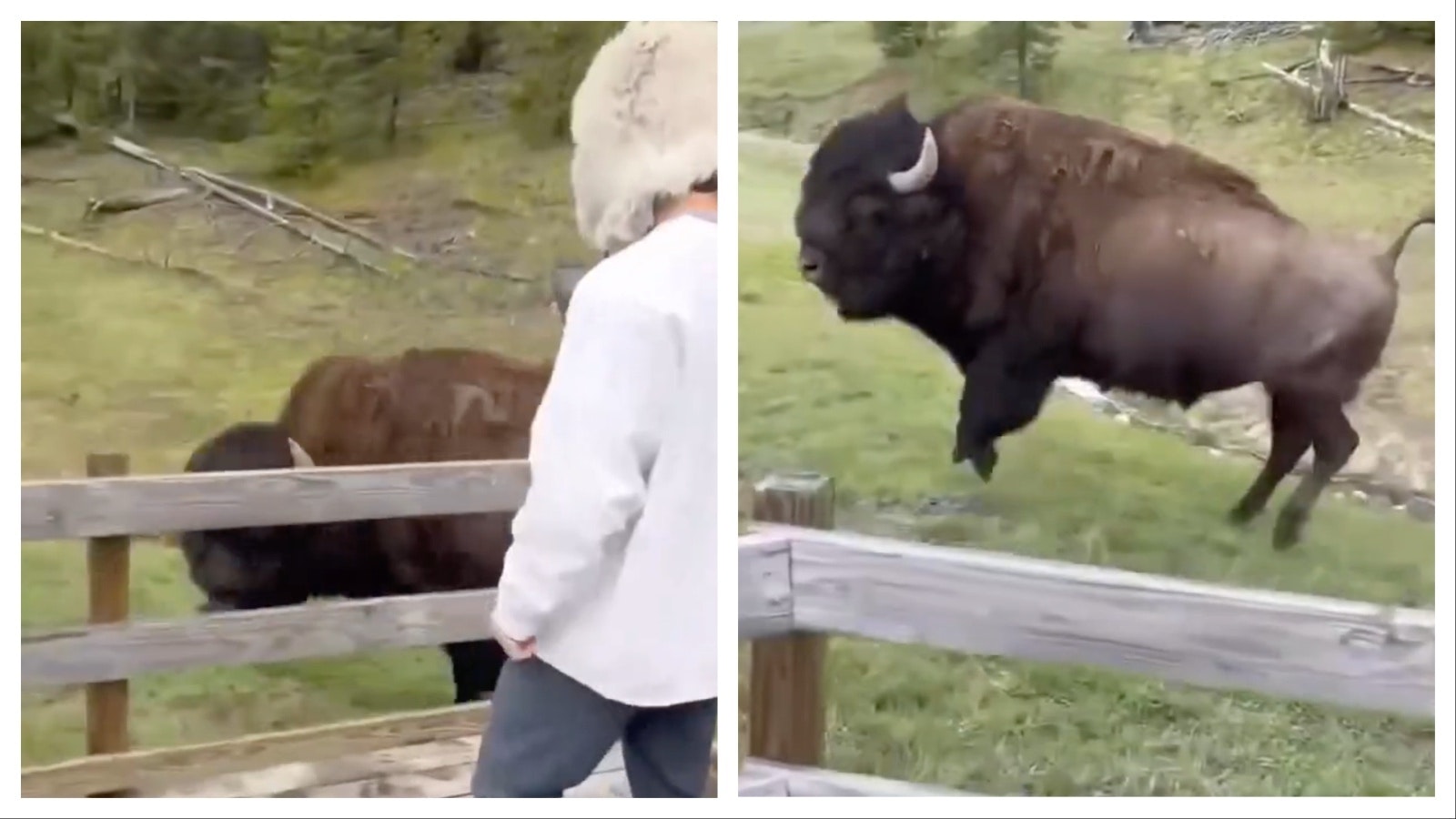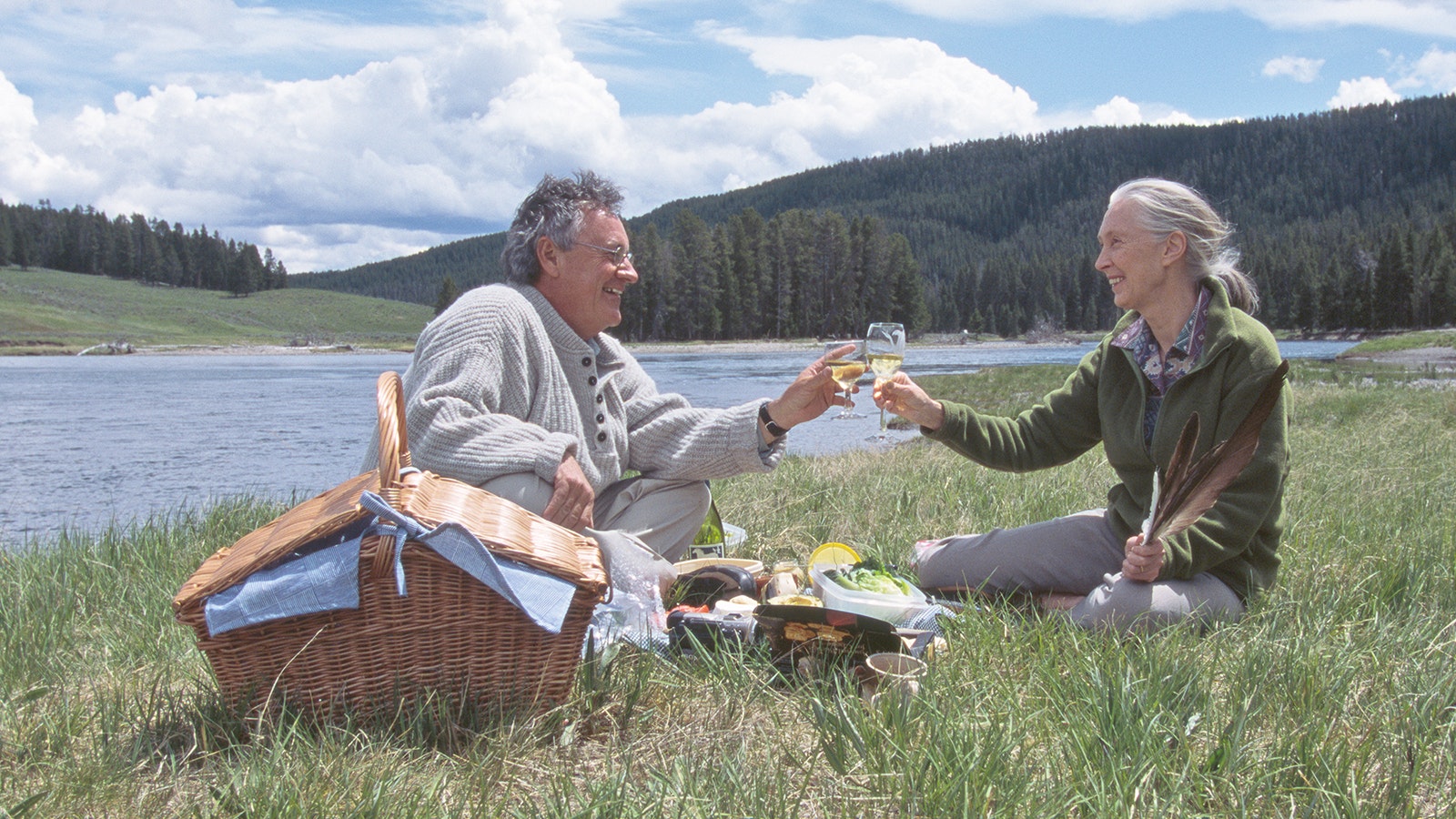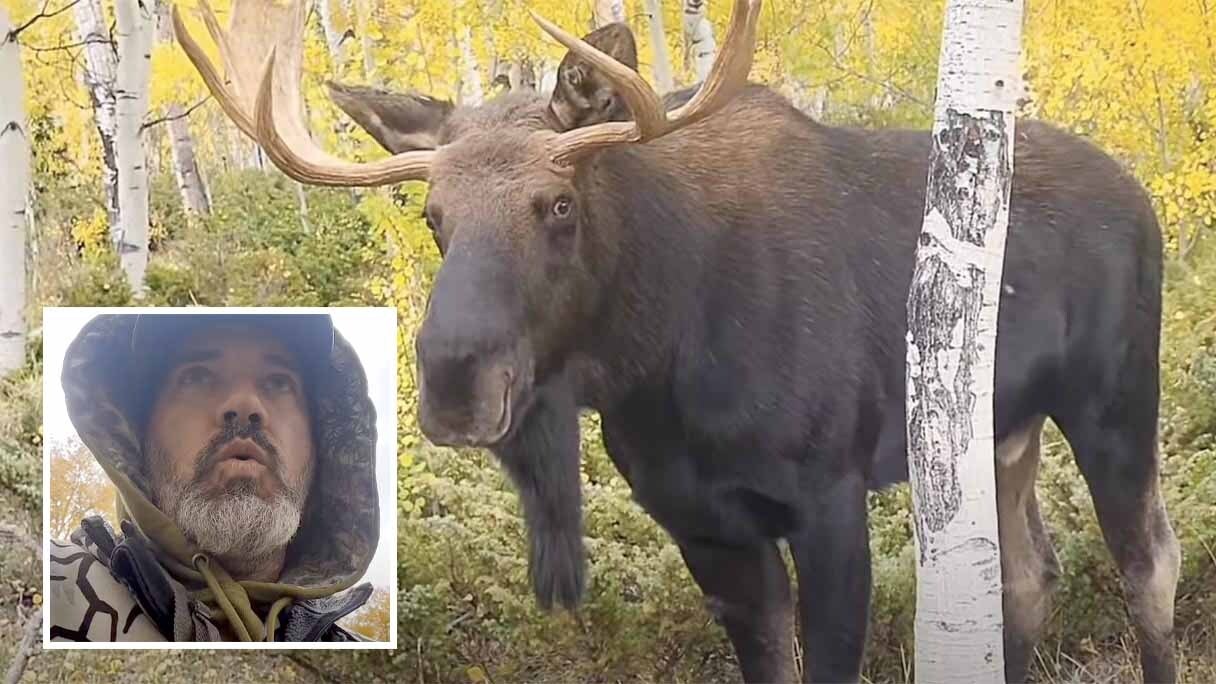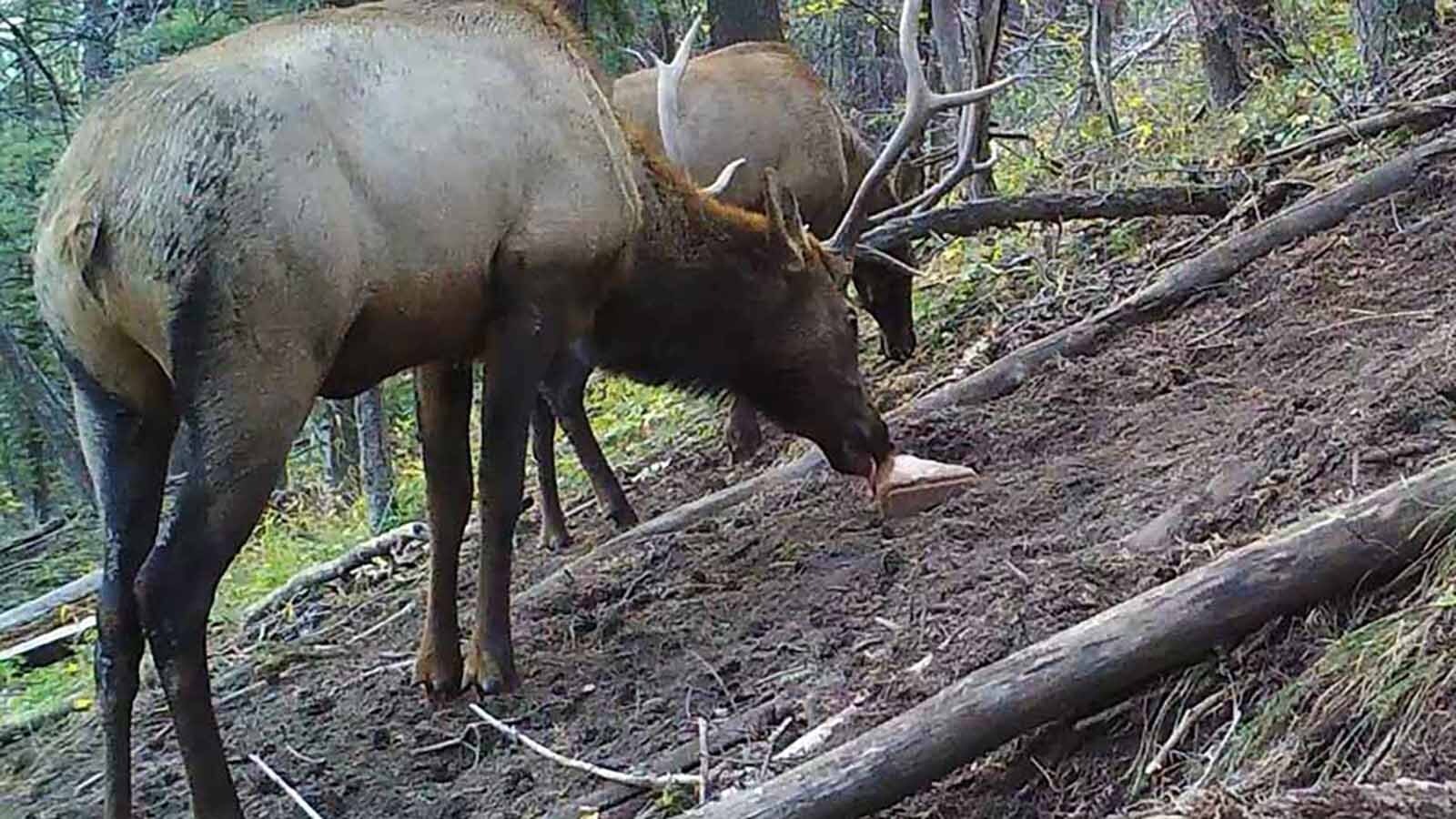Thousands of people have been charmed by a video of a “performing bison” in Yellowstone National Park that appeared to be prancing around and hopping out of playfulness.
For bison biologists, the Friday video has less charm and more charge to it.
To them, the sight signaled an animal building up for an attack, a turn that could have been tragic for the tourists leaning into the animal with their smartphones.
The video titled “He came to perform for tourists” and posted by Jake Slater, shows a crowd of tourists watching the bison from a Yellowstone boardwalk. The bison sprints past the wooden boardwalk, then starts hopping and vigorously shaking its head.
As the bison snorts and roars, the tourists laugh. At least one of the spectators has the wherewithal to realize the bison isn’t playing and says, “I am not comfortable.”
That was the appropriate response, biologists say. If the bison had gotten a little more agitated, there could’ve been several serious injuries on the boardwalk.
Slater’s video has been viewed nearly 10 million times, with many people commenting on how amusing and cute the bison was behaving. Others recognized the extraordinary amount of danger those people were in.
“This bison could have easily plowed into the tourists,” said ecologist, author and bison advocate George Wuerthner. “That bison was not performing except to demonstrate his agitation. They are so fast, and these people were way too close.”
Read The Room
Yellowstone’s bison are wild animals. In Wuerthner’s experience, however, most Yellowstone tourists don’t behave as if they’re aware of that fact.
“People tend to look at the wildlife in Yellowstone like they would if they were at a zoo,” he said. “Those animals are accustomed to people, but that doesn't negate their natural, wild tendencies. And in their wild conditions, Yellowstone’s wildlife will react differently than an animal in the zoo.”
Wuerthner knows a lot more about bison behavior and body language than the average Yellowstone tourist. Still, he doesn’t think you’d need an expert to tell you that the bison was acting agitated and aggressive.
The clearest sign to Wuerthner was the bison’s tail. Usually kept down and hanging, this bull bison’s tail was rigid for the duration of the video.
“When bison are agitated, their tails are held out straight,” he said. “That's a sign that you've got to be careful. He was really upset.”
And the hopping, snorting and head twirling?
It might look comical and flamboyant, but Wuerthner said it's a sign of imminent danger.
“It was getting ready to charge,” he said. “That’s the bull saying, ‘I'm trying to show you what a strong guy I am, and you better watch out.’”
Lost In Bison Translation
Humans might be too detached from nature to understand the intricacies of bison behavior, but bison understand each other. Wuerthner said that the bison’s behavior would be easy for any other bison to read.
“That's a behavior that bison do with other bison, and the other bison know what it means,” he said.
Autumn is the tail-end of the rutting season for Yellowstone’s bison. From June through September, bull bison are throbbing with hormones and aggression, which often forces them into competition with each other over females and territory.
Wuerthner said the behavior being shown by that bison wasn’t necessarily for their benefit. It was showing off its strength, virility, and willingness to get aggressive, which would send a clear message to any other bison.
“It’s just the same thing we have with dogs,” he said. “When a tail-wagging dog comes up to you, that means something different than when they’re barking and baring their teeth. It's the same thing with the bison.”
Tourists don’t speak bison. That means they often stumbled into dangerous circumstances.
All Yellowstone visitors are intruding into the natural habitat of wild bison, but the people in the video were in a much more dangerous spot. They were well within the 25-yard distance that the National Park Service earnestly asks be maintained between them and Yellowstone’s bison, elk, and deer.
Regardless of the language barrier, Wuerthner said this bison’s behavior wasn’t difficult to interpret.
“Even if this was behavior that bison use among themselves, people can tell what they're thinking and what their intentions are,” he said. “It was a warning. That bison was saying, ‘I am very agitated and ready to take some aggressive action if you don't watch your step.’”

No Safe Spaces
The people in the video were watching the bison’s pugnacious performance from an elevated wooden boardwalk with a railing. That should offer some protection if the bison charged, right?
A fully-grown bull bison can weigh up to 2,000 pounds. When flooded with hormones during the rut, there’s no guarantee a bull bison wouldn’t try to turn the boardwalk into a shattered pile of splintered lumber.
“He could have crashed right through that boardwalk if he wanted to,” Wuerthner said.
Wuerthner said he often observed tourists behaving as if there were “safe spaces” in Yellowstone. Tourists might believe they’re safe on a boardwalk or road, but none of the park’s wildlife recognizes these arbitrary barriers as safe spaces.
“People in Yellowstone will stay on the roads and act like it’s human territory,” he said. “They act like that bison and grizzlies know they’re not supposed to go on the road, and there is an imaginary sense of safety.”
While that thought process is “kind of funny” to see in real-time, Wuerthner doesn’t underestimate the real danger of bison that many people seem to ignore when they’re standing in human-constructed areas like roads and boardwalks.
“If a bison’s agitated, a road or boardwalk isn’t going to stop it from charging,” he said. “Standing on a boardwalk is a false sense of security.”
Need A Reminder?
On May 4, 2025, a Florida man was gored by a bison in the Lake Village Area. Yellowstone officials said the man was too close to the bison, which provoked it into charging.
On June 10, a New Jersey man was gored by a bison in the Upper Geyser Basin, near Old Faithful. He was also deemed to have been too close to the bison when the incident occurred.
Both men were lucky to escape with minor injuries.
According to the book “Death in Yellowstone” by Lee H. Whittlesey, there have only been two confirmed deaths by bison in Yellowstone, but they often cause serious injury.
Yellowstone’s bison aren’t zoo attractions or circus performers. They might seem docile and oblivious to the presence of people, but Wuerthner was adamant that these colossal animals shouldn’t be underestimated.
“People have this sense that bison are like cows in a pasture, but more people get hurt from bison than from bears or any other animals in Yellowstone,” Wuerthner said. “That’s partly because people underestimate how bison will react when they approach and how quickly they can respond.”
Andrew Rossi can be reached at arossi@cowboystatedaily.com.





